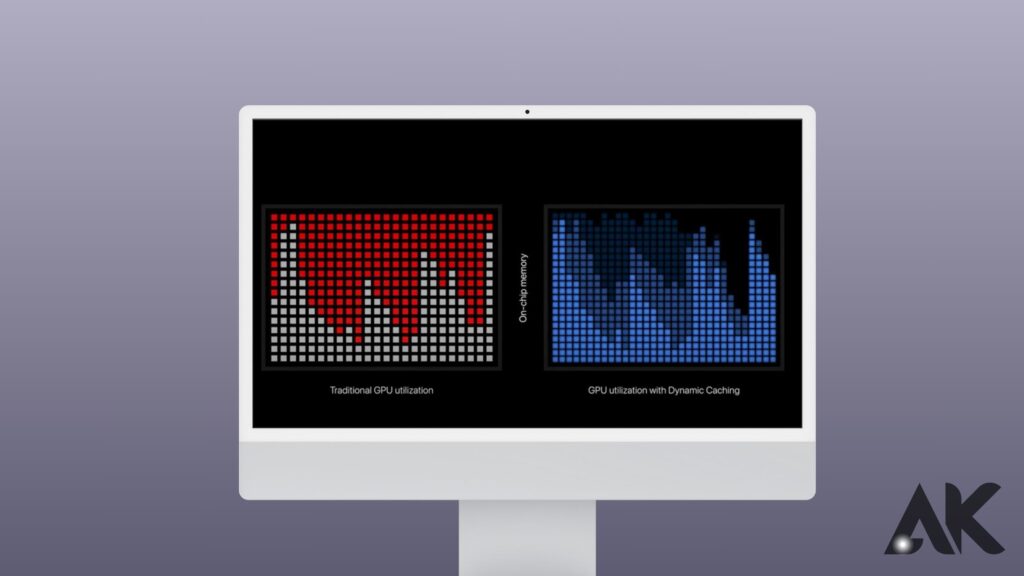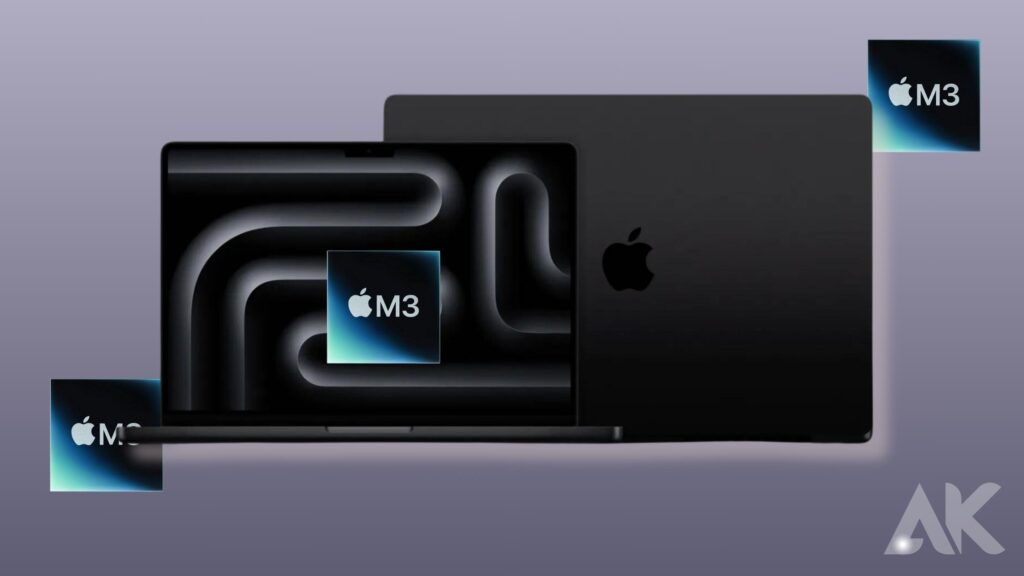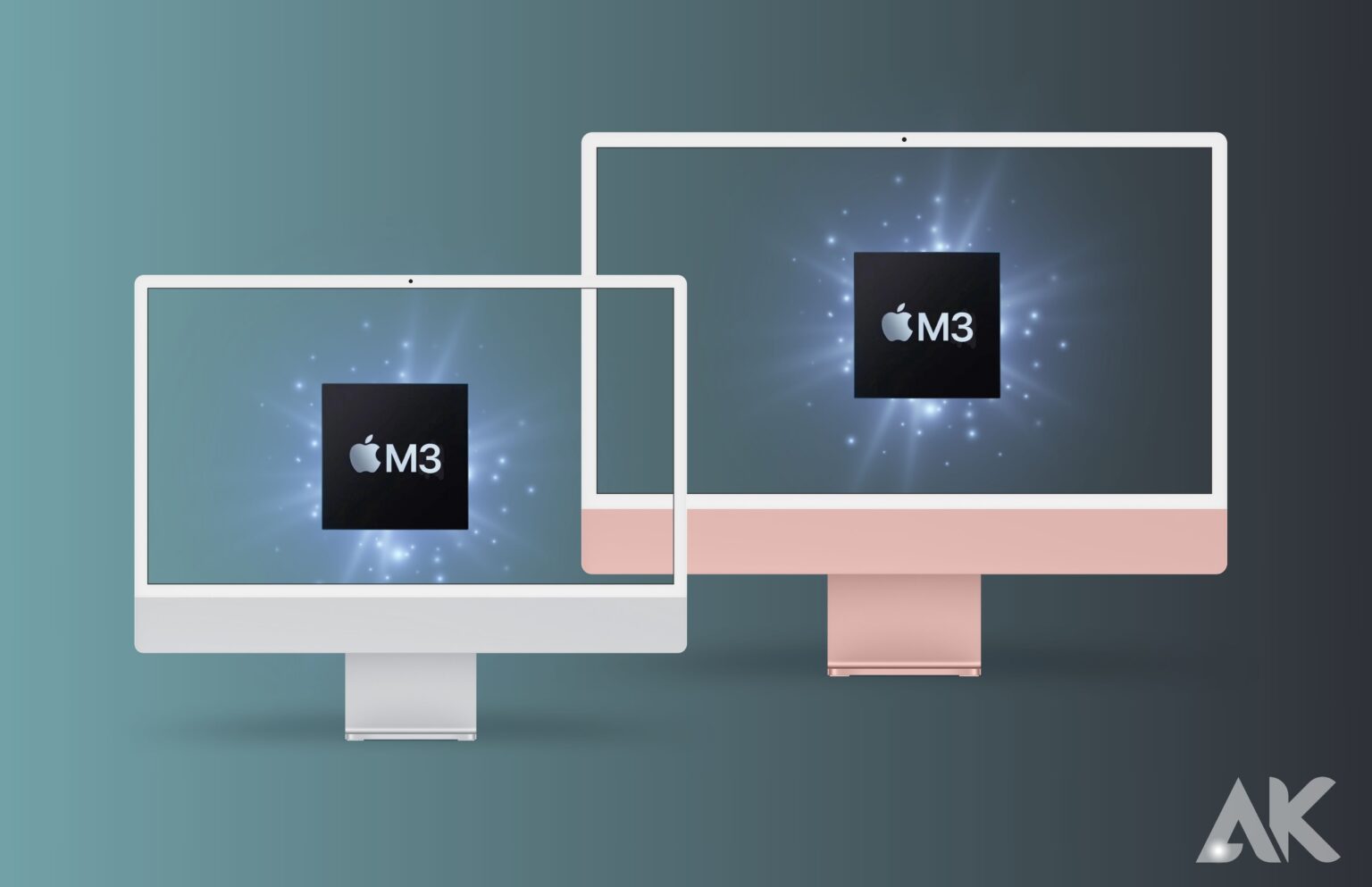The iMac M3’s outstanding performance blows away the competition, elevating Apple’s classic all-in-one desktop to new heights. With lightning-fast speeds and smooth multitasking, this elegant and potent device is powered by Apple’s next-generation M-series CPU. With its remarkable processing power and cutting-edge neural engine, the iMac M3 easily manages everything you throw at it, be it demanding applications, graphic design, or video editing. Stunning colors and crisp details are shown on the bright Retina display, taking you on a visual journey, unlike anything you’ve ever experienced. The revolutionary design and state-of-the-art technology of the iMac M3 redefines desktop performance, transforming workflow and unleashing unprecedented creativity.
Specs and release date

On October 30, 2023, Apple revealed the M3 family during its “Scary Fast” event. In contrast to other chip releases, Apple unveiled the M3, M3 Pro, and M3 Max all at once. On November 7, the first gadgets with the chips were delivered.
The major shift in the new chips is Apple’s switch to the 3nm node. While the M3 eventually modified the technique, the M1 and M2 continued to employ a 5nm method. Additionally, the entire M3 family is affected by that alteration.
Apple chose not to increase core counts as a result. An 8-core CPU and an 8- or 10-core GPU are still included with the basic M3. Similar to this, the M3 Max has a 16-core CPU and a 40-core GPU, while the M3 Pro has a 12-core CPU and an 18-core GPU with both. The M3 Max can expand up to 128GB of unified memory, while the M2 Max can only reach 96 GB. This is the only significant change between the two models.
Apple also made certain changes to the M3 Pro compared to the M2 Pro of the previous generation. While the M2 Pro has eight performance cores and four efficiency cores, the M3 Pro has six performance and six efficiency cores. On paper, it appears to be an unexpected decrease, but the M3 Pro’s node advantage should allow it to still deliver better performance.
According to Apple, the M3 family’s efficiency cores outperform the M1 and M2 families by 30% and 15%, respectively, while the performance cores outperform the M1 and M2 families by 15%. Based on the node benefits, that suggests M3 processors are 20% to 25% better than M2, but as usual, we’ll have to wait for independent benchmarks to confirm Apple’s claims.
Dynamic Caching and Ray Tracing

For the M3 series, the process change is important, but Apple is also promoting a whole new GPU architecture. This architecture’s primary feature is dynamic caching, which aims to boost speed by only consuming the precise amount of memory required for activities, hence increasing average GPU utilization.
The operation of dynamic caching is a little more intricate. It seems that the feature prevents shaders, which are sophisticated GPU programs, from requiring more memory than necessary, enabling simpler GPU programs to run more quickly. Theoretically, this ought to enhance performance.
Some important M3 family features appear to have been made possible by dynamic caching. Among these is hardware-accelerated ray tracing, which at last enables Macs to utilize this functionality for gaming. Ray tracing isn’t supported by many Mac games, but maybe this will change now that an official Apple chip is available.
Mesh shading is the alternative. Although Windows PCs have had mesh shaders for a few years, they are just now starting to become a necessary component for gaming. Although mesh shader support isn’t really important at the moment, it does position the M3 family for success in the future, particularly if Apple keeps pushing into Mac gaming.
Which Macs have M3 chips?

M3 processors are presently limited to the 24-inch iMac and the MacBook Pro, but we anticipate that Apple will soon include them in its whole array of Macs. However, you are unable to combine the M3 chips with other items. Apple has them divided up a certain way.
This is the breakdown of that:
- iMac 24 inch, just M3
- MacBook Pro 14-inch Models: M3, M3 Pro, or M3 Max
- MacBook Pro 16-inch model: M3 Pro or M3 Max
It’s difficult to predict which goods will get updates next. According to rumors, Apple is still developing a 27-inch iMac Pro for early 2024. As a result, we could see the M3 Pro and M3 Max CPUs on that device. However, the iMac Pro is about six years old, so it may be a discontinued model.
The Mac mini is the clear choice for an M3 upgrade. The Mac mini, which was most recently upgraded by Apple in January 2023, is still the most affordable method to get Apple hardware. We believe that, based on Apple’s typical release schedule, this device will be the next to receive an M3 upgrade.
We don’t anticipate any improvements to the MacBook Air or Mac Studio for some time. We probably won’t learn anything new about the 15-inch MacBook Air and the M2 Mac Studio until late in 2024, considering Apple only debuted these devices in June 2023. Additionally, the fact that Apple is still selling the MacBook Air M1 suggests that it is delaying the release of the M3 update for as long as possible.
Entry-level M3 performance
Although Apple is now only offering the basic M3 processor in two devices, the company is claiming significant performance improvements. The 10-core GPU is 20% faster than the M2 and 65% faster than the M1, according to the firm, while the 8-core CPU is 35% faster than the M1 and 20% faster than the M2. It’s crucial to remember that they are “up to” figures, so you might not always see such a significant performance improvement.
According to Apple, the M3 chip in the 14-inch MacBook Pro outperforms the M2 chip in the 13-inch MacBook Pro by 40% in some programs, including picture filters and effects. However, Apple has only offered that one comparison to the M2 thus far. Apple claims that the 14-inch M3 model offers 40% quicker code compilation in Xcode, 60% faster render performance in Final Cut Pro, and 40% faster spreadsheet performance in Microsoft Excel when compared to the M1 in the 13-inch MacBook Pro.
In terms of CPU tasks, it appears that the M3’s advantages over the M2 are negligible. The primary performance enhancer appears to be the new GPU, which explains the significant improvement in picture filter and effects performance that Apple is touting.
Since the 24-inch iMac has only been compatible with the M1 since its inception, we believe the M3 will shine in this model. Apple claims that the M3 model outperforms the M1 model in terms of speed overall. Apple claims that performance in Safari and Microsoft Excel is up to 30% quicker, that frame rates in games are 50% faster, and that performance in Final Cut Pro and Photoshop is up to twice as fast.
You shouldn’t take Apple’s benchmarks at face value, as is typically the case with them. Even if Apple’s promises are accurate, it’s crucial to wait for independent benchmarks to see whether the increased performance comes with any restrictions because they’re unclear.
Performance for the high-end chips
As one advances to the M3 Pro and M3 Max, the advantages over earlier models start to go away. Apple claims that the M3 Pro’s 12-core CPU is up to 20% quicker than the M1 Pro’s. Interestingly, Apple omitted a comparison with the M2 Pro. That may be the result of the CPU section not seeing much of a gain. According to Apple, the 18-core GPU offers a marginal 10% boost over the M2 Pro but up to a 40% gain over the M1 Pro.
Apple claims that the M3 Max has the largest generational advances of any M3 family member, although this isn’t the case. According to the manufacturer, the 16-core CPU outperforms the M2 Max by up to 50% and the M1 Max by an astounding 80%. Comparably, the 40-core GPU outperforms the M2 Max by up to 20% and the M1 Max by up to 50%.
In real-world scenarios, Apple reports that the M3 Pro outperforms the M1 Pro by 40% in Photoshop and 30% in Premiere Pro while editing. It comes as no surprise that the M3 Max performs better than the M1 Max, outperforming it by twice in MathWorks, 2.5 times in Maxon Redshift, and 65% in DaVinci Resolve.
It appears that the M3 Max is the chip that sticks out among the M3 family. From all chips, we anticipate mediocre CPU increases and a significant boost in GPU performance, but based on Apple’s figures, it appears that the M3 Max has significant boosts in both CPU and GPU performance. Once more, to confirm Apple’s claims, it’s crucial to wait for independent testing.
Conclusion
Apple announced the M3 family of all-in-one desktop chips, including the M3, M3 Pro, and M3 Max, during its “Scary Fast” event on October 30, 2023. The M3 family features a 3nm node process, with the base M3 still featuring an 8-core CPU and either an 8-core or 10-core GPU. The M3 Pro comes with a 12-core CPU and an 18-core GPU, while the M3 Max has a 16-core CPU and a 40-core GPU. The M3 Pro also has six performance and six efficiency cores, compared to the M2 Pro’s eight performance cores and four efficiency cores.
The M3 family offers a 20% to 25% improvement over the M2 based on node advantages. Dynamic Caching, a key feature of the M3 family, increases average GPU utilization and improves performance by using the exact amount of memory that tasks need. The M3 family is only available in two products: the 24-inch iMac and the MacBook Pro.
FAQS
Will there be an M3 iMac?
Compared to the previous generation’s M1, the iMac with M3 is up to twice as fast. Additionally, the new iMac is up to 2.5 times quicker than the most popular 27-inch versions and 4 times faster than the most powerful 21.5-inch model, for consumers moving from an Intel-based iMac.
Is Apple releasing a new iMac in 2023?
Pre-orders for the new iMac (M3, 2023) are now open. It will go on sale on November 7 and start at $1299, much like the previous model. With an 8-core CPU and a 10-core GPU, the new M3 chip powers the iMac (M3, 2023) and increases its speed by up to double that of the M1 iMac.
What was the iMac, and why was it so successful?
Apple’s latest consumer desktop product, the iMac, was intended to be an affordable, user-focused computer that could be readily connected to the Internet. The cathode-ray tube display serves as the foundation for the iMac’s all-in-one architecture, which combines the G3 CPU, parts, and networking into a single chassis.

